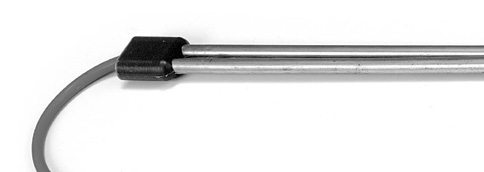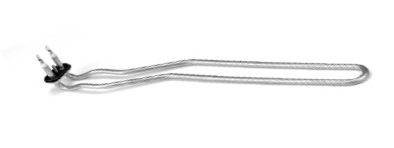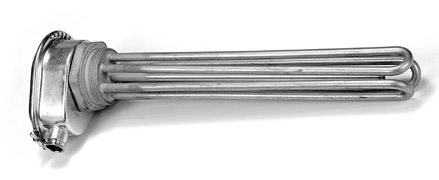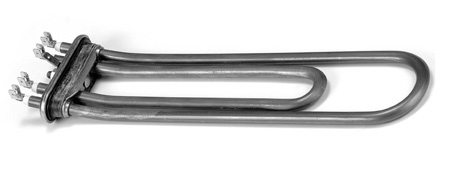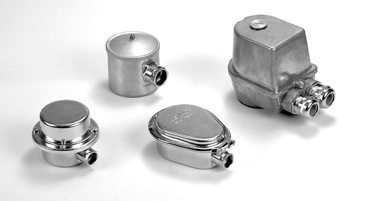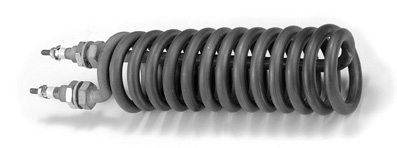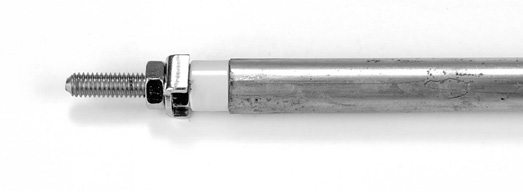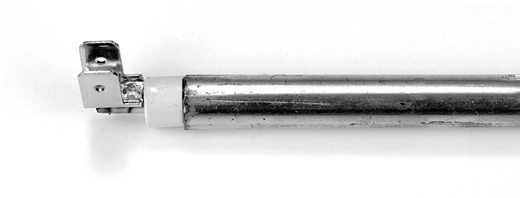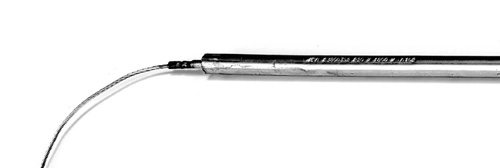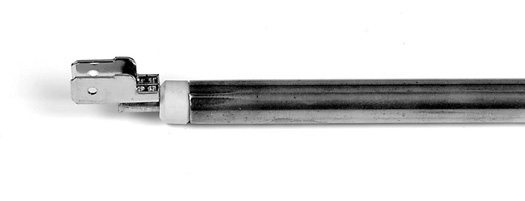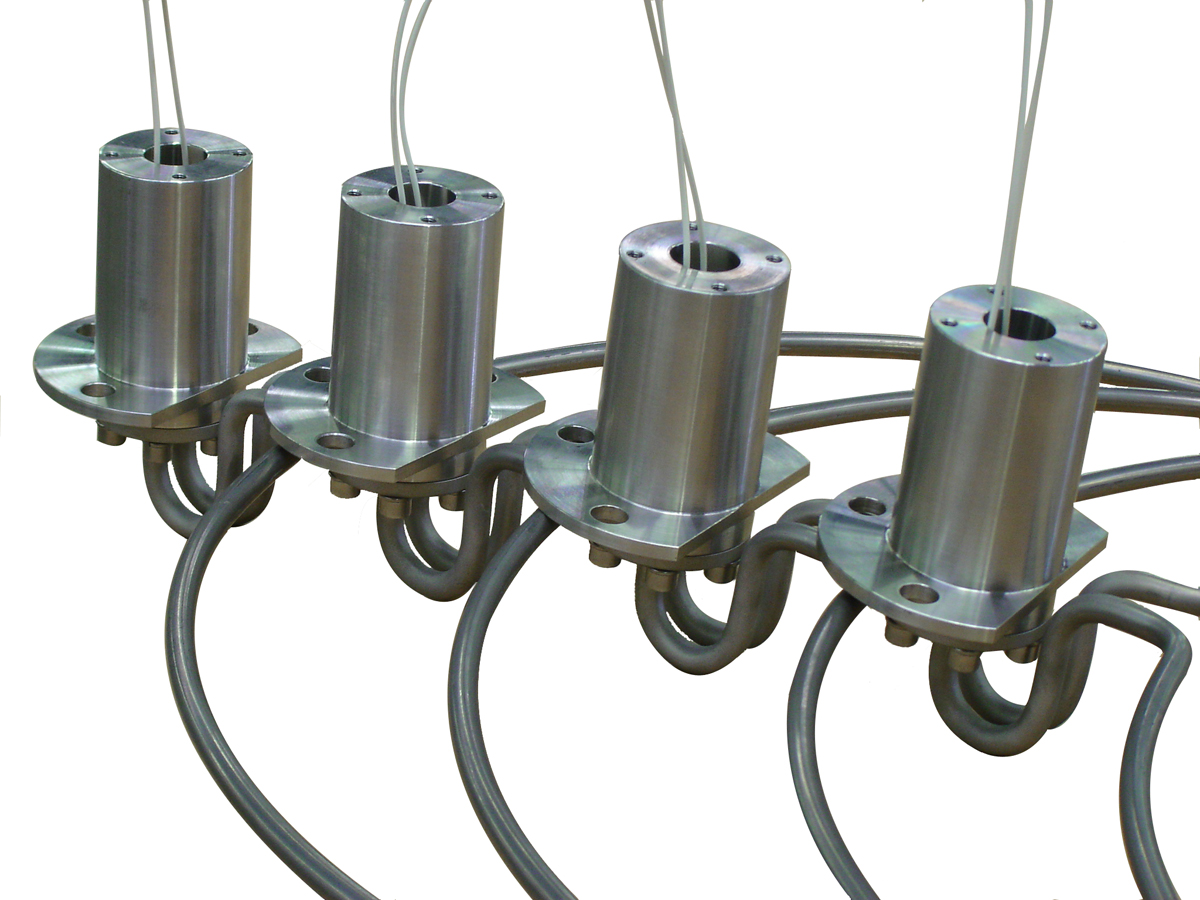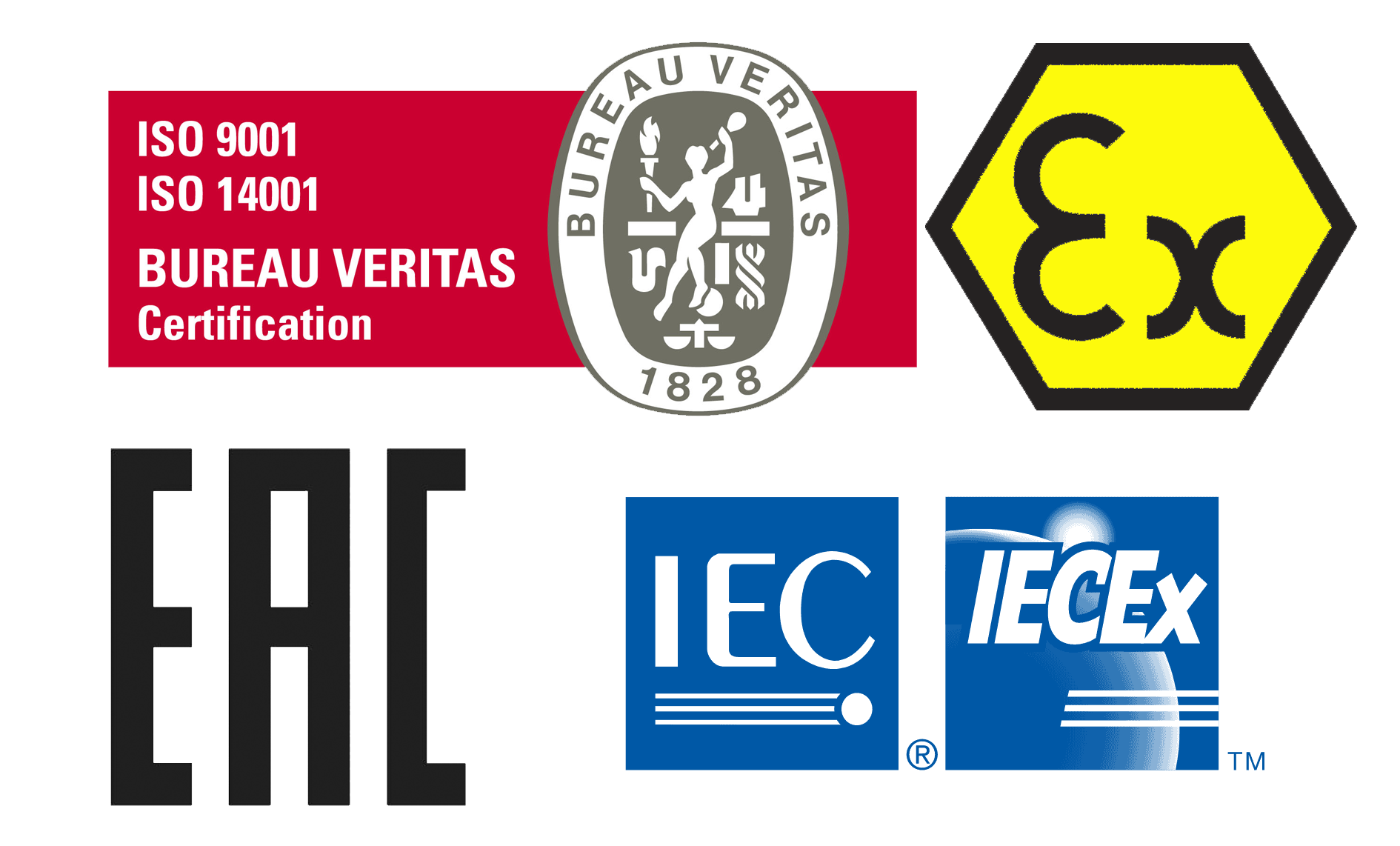Closed Tubular Heating Elements
Heating elements are often produced to customer-specific requirements.
Heating elements are used for applications such as ovens, cookers and griddles and for warming up tools and machinery.These heating elements are very flexible and can be bent to suit the application.
Sinus Jevi has a broad range of steel types which make it possible to supply products for more or less all applications.
Application
Of course, when choosing a tube cap material, the medium to be heated has a significant part to play. The surface load,W/cm², is another factor. If the surface load is too high, the heating element will overheat and burn. In the case of certain medium where the heat transmission is particularly high, a significantly higher surface load than in air can be accepted, just as the media may make specific demands of the tube cap material on account of corrosion problems.
Likewise the media may demand a particularly low surface temperature due to -for example- a risk of fire or coating problems. The issue of corrosion can often be resolved by contacting a supplier of chemicals.
Construction
Sinus Jevi’s compressed heating elements comprise three components:
• a special alloy resistance wire which is centered in the tube (resistance wire can be CrNi or DSD)
• magnesium oxide for electrical insulation
• steel tube cap, material depending on application.
Sealing
The heating element is sealed to prevent the magnesium oxide from absorbing moisture and thereby causing a transition point in the heating element. Two types of sealant are used, depending on how high temperature the seal may be subject to.
• silicone: max. 180°C
• polyurethane: max. 120°C
Silicone can only be used in continuous operation in which the heating element is not exposed to moisture, as silicone is not diffusion-proof so moisture transfer is possible. Polyurethane is diffusion-proof and bonds well to metal.
Cold zone
The cold zone at the tube ends may vary from 35 mm up to 1200 mm depending on the choice of terminal and tube type.
Tube types
| Material | Dimension | Max. surface temperature |
Max.tube length |
Ø2,5 pin | Ø3,5 pin | M4 steel | M4 stainless steel |
M6 stainless steel |
| Copper | Ø6,25 mm | 150°C | 3860 mm | X | ||||
| Copper | Ø8,50 mm | 150°C | 7080 mm | X | X | X | X | |
| Copper | Ø10,2 mm | 150°C | 7860 mm | X | X | X | X | |
| AISI 304 | Ø6,25 | 750°C | 3700 mm | X | ||||
| AISI 304 | Ø8,50 mm | 750°C | 6810 mm | X | X | X | X | |
| AISI 321 | Ø6,25 | 750°C | 3700 mm | X | ||||
| AISI 321 | Ø8,50 | 750°C | 6810 mm | X | X | X | X | |
| AISI 321 | Ø10,2 | 750°C | 7650 mm | X | X | X | X | |
| AISI 309 | Ø8,50 | 900°C | 6400 mm | X | X | X | X | |
| AISI 316L | Ø6,25 | 750°C | 3700 mm | X | ||||
| AISI 316L | Ø8,50 | 750°C | 6810 mm | X | X | X | X | |
| AISI 316L | Ø10,2 | 750°C | 7650 mm | X | X | X | X | |
| AISI 316L | Ø12,7 | 750°C | 7020 mm | X | ||||
| Inconel 600 | Ø8,50 | 980°C | 6810 mm | X | X | X | X | |
| Incoloy 800 | Ø6,25 | 800°C | 3700 mm | X | ||||
| Incoloy 800 | Ø8,50 | 800°C | 6810 mm | X | X | X | X | |
| Incoloy 800 | Ø10,2 | 800°C | 7650 mm | X | X | X | X | |
| Incoloy 800 | Ø12,7 | 800°C | 7020 mm | X | ||||
| Incoloy 825 | Ø6,25 | 750°C | 3700 mm | X | ||||
| Incoloy 825 | Ø8,50 | 750°C | 6810 mm | X | X | X | X | |
| Incoloy 825 | Ø12,7 | 750°C | 7020 mm | X | ||||
| SMO 254 | Ø8,50 | 400°C | 6810 mm | X | X | X | X | |
| Titanium | Ø8,50 | 650°C | 6900 mm | X | X | X | X | |
| Titanium | Ø12,7 | 650°C | 6960 mm | X |




